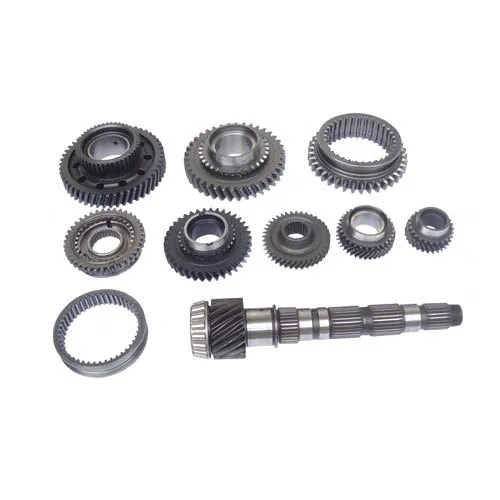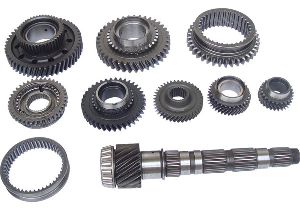Product Description
Products Description
|
Product Name |
VVT Camshaft Timing Gear Adjuster | |||
|
Condition |
New |
|||
|
Material |
Steel |
|||
|
Quality |
100% Test |
|||
|
Part Number |
||||
|
OEM number |
13050-28571 | |||
Details Images
Our Advantages-Why Choose Us
Transport
FAQ
Q: Are you trading company or manufacturer ?
A: We are the set design, development, production, sale and service of industry and trade-oriented enterprises.
Q: What is the MOQ?
A: MOQ depends on our clients demands, we welcome trial order before mass production.
Q: How does your factory make sure the product quality?
A: Durning production, we have FQC, IQC ,IPQC and OQC to control the quality. We will final check before shipping to avoid any problem.
Q: What is your terms of payment ?
A: T/T, paypal, ali-pay,west union, cash, etc, paid before shippment.
Q:What is the warranty?
A:One year for CHINAMFG parts and 3 years for OEM parts.
Q:Can you send products to my country?
A:Sure,we can. We can ship the goods by express or by sea.
Q:Can you do OEM for me?
A: We accept OEM and ODM.
Q: How can I place the order?
A: Confirm PI or Invoice, make payment, then we will arrange shipment soon.
Q: When can I get the quotation ?
A: We usually quote you within 24 hours after we get your inquiry. If you are very urgent to get the quotation.Please call us or tell us in your mail, so that we could regard your inquiry priority.
| After-sales Service: | 12 Months |
|---|---|
| Warranty: | 12 Months |
| Car Make: | Nissan |
| Car Model: | Universal |
| Classification: | Adjustable Air Inlet |
| Material: | Steel |
| Customization: |
Available
| Customized Request |
|---|

What are the signs of a worn-out or malfunctioning gear system in an automobile?
A worn-out or malfunctioning gear system in an automobile can exhibit several signs. Here’s a detailed explanation:
1. Difficulty Shifting Gears:
One of the most common signs of a gear system issue is difficulty shifting gears. You may experience resistance, grinding, or a clunking sound when trying to engage or disengage a gear. Gear shifts may feel rough or not engage smoothly, indicating potential problems with the clutch, synchro rings, or other transmission components.
2. Slipping Gears:
If you notice that the gear slips out of place while driving, causing sudden loss of power or RPM fluctuations, it could indicate a worn-out or faulty gear system. Slipping gears can be dangerous, as it can lead to a loss of control over the vehicle’s speed and acceleration.
3. Unusual Noises:
A malfunctioning gear system may produce unusual noises. You may hear grinding, rattling, whining, or humming sounds during gear shifts or while the vehicle is in motion. These noises can indicate issues with gear engagement, worn-out bearings, damaged gears, or other internal transmission problems.
4. Burning Smell:
A burning smell, similar to that of overheated or burnt clutch material, can indicate a problem with the gear system. This can occur due to excessive friction caused by a slipping clutch or other transmission issues. It’s important to address this promptly, as prolonged operation can cause further damage.
5. Gear Sluggishness:
If you notice a delay or sluggish response when shifting gears, it could be a sign of a gear system problem. The gears may take longer to engage, causing a delay in acceleration or difficulty maintaining speed. This can result from worn-out synchronizers, damaged gear teeth, or insufficient transmission fluid.
6. Gear Popping Out:
In some cases, a worn-out or faulty gear system can cause a gear to pop out of engagement unexpectedly. This can happen while driving or when changing gears, leading to an abrupt loss of power and potentially causing safety hazards on the road.
7. Transmission Fluid Leaks:
Leaking transmission fluid is another potential sign of a gear system problem. If you notice reddish fluid underneath the vehicle, it may indicate a transmission fluid leak. Insufficient fluid levels can affect gear lubrication and lead to gear system malfunctions.
8. Dashboard Warning Lights:
In modern vehicles, a malfunctioning gear system can trigger dashboard warning lights, such as the check engine light or transmission warning light. If you see any warning lights illuminated, it’s advisable to have the vehicle inspected by a qualified mechanic.
If you observe any of these signs, it’s crucial to have your vehicle inspected and diagnosed by a professional technician. They can accurately identify the cause of the gear system issue and recommend the necessary repairs or replacements to ensure the safe and proper operation of your vehicle.

What is a continuously variable transmission (CVT) and how does it work in cars?
A continuously variable transmission (CVT) is a type of automatic transmission that provides an infinite number of gear ratios within a specific range. Here’s a detailed explanation of how it works:
In a traditional transmission, gears of different sizes are used to achieve different gear ratios. These gears have fixed ratios, and the transmission shifts between them to adjust the speed and torque output. In contrast, a CVT uses a different mechanism to vary the gear ratios.
1. Pulleys and Belt/Chain System:
A CVT consists of two pulleys connected by a metal belt or a chain. Each pulley has two halves that can move closer together or farther apart. One pulley is connected to the engine, and the other is connected to the wheels.
2. Variable Pulley Diameter:
The pulleys in a CVT have variable diameters. As the pulley halves move closer together, the effective diameter decreases, and as they move farther apart, the effective diameter increases. This adjustment of the pulley diameters allows for continuous variation of the gear ratio.
3. Belt/Chain Movement:
The metal belt or chain runs between the two pulleys. When the effective diameter of one pulley decreases, the belt or chain moves towards the larger diameter on the other pulley. As a result, the contact point on the pulleys changes, altering the effective gear ratio.
4. Hydraulic or Electronic Control:
To control the movement of the pulleys, a CVT uses a hydraulic or electronic control system. This system monitors various factors, such as vehicle speed, engine load, throttle input, and acceleration demands, to determine the optimal gear ratio. It then adjusts the position of the pulley halves accordingly.
5. Seamless Gear Ratio Changes:
Due to the continuous variation of the pulley diameters, a CVT provides seamless gear ratio changes. It can continuously adjust the gear ratio to keep the engine operating at its most efficient RPM for a given driving condition. This flexibility allows the engine to deliver power more effectively and improves fuel efficiency.
6. “Step” or “Shift” Modes:
Some CVTs offer “step” or “shift” modes to simulate traditional gear shifting. In these modes, the CVT may have predefined ratios or “virtual” gears that mimic the feel of gear changes. This can provide a more familiar driving experience for those accustomed to traditional automatic transmissions.
CVTs are known for their smoothness and fuel efficiency. By continuously adjusting the gear ratio to match the engine’s power output and the driving conditions, a CVT helps optimize fuel consumption. They are commonly found in smaller vehicles and hybrid cars.
However, it’s worth noting that CVTs may have a different driving feel compared to traditional transmissions, as the engine RPM can remain relatively constant during acceleration. Some drivers may prefer the stepped gear changes of conventional transmissions for a more engaging driving experience.
“`
What are the common types of automobile transmissions available?
There are several common types of automobile transmissions used in vehicles. Here’s a detailed explanation:
1. Manual Transmission: Manual transmissions, also known as “stick shift” or “standard” transmissions, require the driver to manually shift gears using a clutch pedal and gearshift lever. They typically have a set of forward gears, including first, second, third, fourth, and fifth (or sixth) gears, along with a reverse gear. Manual transmissions offer direct control over gear selection and are often preferred by enthusiasts for their engagement and control.
2. Automatic Transmission: Automatic transmissions use a torque converter and a complex system of planetary gears to automatically shift gears without driver intervention. They are the most common type of transmission in modern vehicles. Automatic transmissions provide smooth and convenient operation as they automatically select the appropriate gear ratio based on factors such as vehicle speed, engine load, and driver input. They typically offer “Drive” (D) mode for normal driving and may include additional modes like “Sport” (S) or “Economy” (E) for different driving preferences.
3. Continuously Variable Transmission (CVT): CVT is a type of automatic transmission that offers an infinite number of gear ratios within a specific range. Instead of using traditional gears, CVTs use a system of belts or chains and pulleys to provide seamless gear ratio changes. CVTs are known for their smoothness and fuel efficiency as they keep the engine operating at its most efficient RPM. They are commonly found in smaller vehicles and hybrid cars.
4. Dual-Clutch Transmission (DCT): DCT combines features of both manual and automatic transmissions. It uses two separate clutches for odd and even gears, allowing for quick and smooth gear shifts without interrupting power delivery. One clutch handles the current gear, while the other anticipates and prepares the next gear for engagement. DCTs provide fast and precise gear changes, making them popular in high-performance and sporty vehicles.
5. Automated Manual Transmission (AMT): AMT, also known as “Semi-Automatic Transmission” or “Clutchless Manual Transmission,” is essentially a manual transmission with automated clutch and gear shifting. Unlike traditional automatic transmissions, AMTs do not have a torque converter. Instead, they use actuators to control the clutch and gear selection based on the driver’s input or pre-programmed settings. AMTs are cost-effective alternatives to conventional automatic transmissions and are commonly found in entry-level or budget-friendly vehicles.
6. Sequential Manual Transmission (SMG) and Dual-Clutch Sequential Transmission: Sequential transmissions are commonly used in high-performance and racing vehicles. They allow for quick and precise sequential gear shifting without the need for a clutch pedal. SMGs use a single clutch, while dual-clutch sequential transmissions operate similarly to DCTs, with two clutches for improved performance and faster gear changes. Sequential transmissions provide rapid gear shifts, enhanced control, and are often controlled via paddle shifters mounted on the steering wheel.
These are some of the most common types of automobile transmissions available. Each type has its own advantages and characteristics, catering to different driving preferences, performance requirements, and fuel efficiency goals.


editor by CX 2023-09-14